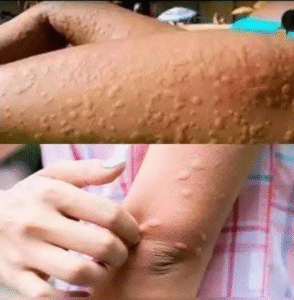
Everything You Need to Know About Shingles: Causes, Detection, and Natural Treatments
Shingles, also known as herpes zoster, is a painful viral infection caused by the reactivation of the varicella-zoster virus—the same virus that causes chickenpox. Once a person recovers from chickenpox, the virus lies dormant in the nerve tissue near the spinal cord and brain. Years or even decades later, it can reactivate and manifest as shingles.
Causes and Risk Factors
Shingles typically affects individuals over the age of 50, but it can occur at any age, especially in those with weakened immune systems. Stress, aging, certain medications (like chemotherapy or steroids), and conditions such as HIV/AIDS or cancer can increase the risk of the virus reactivating.
The most common trigger is a weakened immune system. As people age, their natural immunity declines, making it easier for dormant viruses to resurface. Emotional stress and physical trauma can also play a role in reactivating the virus.
Symptoms and Detection
The first signs of shingles may include burning, tingling, or itching sensations, usually on one side of the body. This is followed by a painful red rash that typically appears in a band or strip, often wrapping around the torso but also possible on the face, eyes, or limbs. Within a few days, the rash develops into fluid-filled blisters that eventually scab over.
Additional symptoms may include:
-
Fever
-
Fatigue
-
Headache
-
Sensitivity to light
The pain associated with shingles can range from mild to severe. In some cases, people experience postherpetic neuralgia (PHN), a complication where the pain persists for months or even years after the rash has healed.
Diagnosis is typically made based on the appearance of the rash and reported symptoms. In rare cases, lab tests may be used to confirm the presence of the virus.
Natural Treatments and Relief
While antiviral medications like acyclovir or valacyclovir are commonly prescribed to reduce symptoms and speed healing, many people also turn to natural remedies for relief and faster recovery. Here are some popular options:
-
Cool Compresses: Applying a cool, damp cloth to the rash several times a day can reduce inflammation and ease itching.
-
Oatmeal Baths: Adding colloidal oatmeal to a lukewarm bath can soothe irritated skin.
-
Aloe Vera Gel: Known for its healing properties, aloe vera may help calm the rash and provide moisture.
-
Honey: Raw honey has antibacterial and anti-inflammatory properties and may be applied gently to the blisters to help healing.
-
Vitamin B12 and Lysine: These supplements are thought to support the immune system and nerve health. Some studies suggest lysine may help slow viral growth.
-
Stress Reduction: Yoga, meditation, and deep breathing can support immune function and lessen the chance of flare-ups or complications.
Prevention
The shingles vaccine (Shingrix) is recommended for adults over 50, even for those who previously had shingles or received the older Zostavax vaccine. It is highly effective at reducing the risk of shingles and PHN.
Conclusion
Shingles is a serious and often painful condition, but with early detection and a combination of medical and natural treatments, symptoms can be managed effectively. Understanding the causes and knowing how to respond quickly can make a significant difference in both recovery time and long-term comfort.
